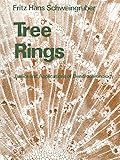Tree Rings [Libro electrónico] / Fritz Hans Schweingruber
Por: Schweingruber, Fritz Hans [autor/a].
Tipo de material: Libro
en línea Editor: The Netherlands: Kluwer Academic Publishers, c1988Descripción: xiv, 276 páginas : fotografías, ilustraciones, mapas, retratos ; centímetros.ISBN: 0792305590; 9780792305590; 9789400912731 (Online).Nota de acceso: Disponible para usuarios de ECOSUR con su clave de acceso Nota de bibliografía: Incluye bibliografía: páginas 262-272 e índice: páginas 273-276 Número de sistema: 56748Resumen:
Libro
en línea Editor: The Netherlands: Kluwer Academic Publishers, c1988Descripción: xiv, 276 páginas : fotografías, ilustraciones, mapas, retratos ; centímetros.ISBN: 0792305590; 9780792305590; 9789400912731 (Online).Nota de acceso: Disponible para usuarios de ECOSUR con su clave de acceso Nota de bibliografía: Incluye bibliografía: páginas 262-272 e índice: páginas 273-276 Número de sistema: 56748Resumen:| Tipo de ítem | Biblioteca actual | Colección | Signatura | Estado | Fecha de vencimiento | Código de barras |
|---|---|---|---|---|---|---|
| Libros | Biblioteca Electrónica Recursos en línea (RE) | Acervo General | Recurso digital | ECO400567481133 |
Incluye bibliografía: páginas 262-272 e índice: páginas 273-276
Disponible para usuarios de ECOSUR con su clave de acceso
At a meeting of dendrochronologists an American colleague described the effects of volcanic eruptions on annual ring formation in bristlecone pines. I knew very little about either volcanoes or American pines! At the same meeting European scientists spoke on the dendrochronological dating of lakeshore settlements and the effects of larch bud moth attack on trees in the Alps. It is possible that American participants were not in a position to fully appreciate these papers either. In other words, dendrochronology is an extremely interdisciplinary science; its facets range from modern statistics on wood anatomy to the history of art. It is difficult even for dendrochronol ogists to keep in touch with the whole spectrum, and even more difficult for the layman to obtain an overall view of the many methods and fields of application. In recent times specialisation has begun to hinder communication be tween the various sectors. Archaeologists, for instance, set up their own dendrochronological laboratories and construct independent chronologies to serve their particular interests. The scientific institutions which previously carried out such work are now turning more and more to strongly statistically or biologically-oriented questions. The full wealth of information contained in tree rings, however, will be revealed only when dendrochronologists make a concerted effort to relate the findings of the different fields. In spite of inevitable specialisation, it is necessary that the expert concern himself with the work of his colleagues. eng
Disponible en línea
Disponible en formato PDF
Subscripción a ELSEVIER 26 de diciembre del 2013
